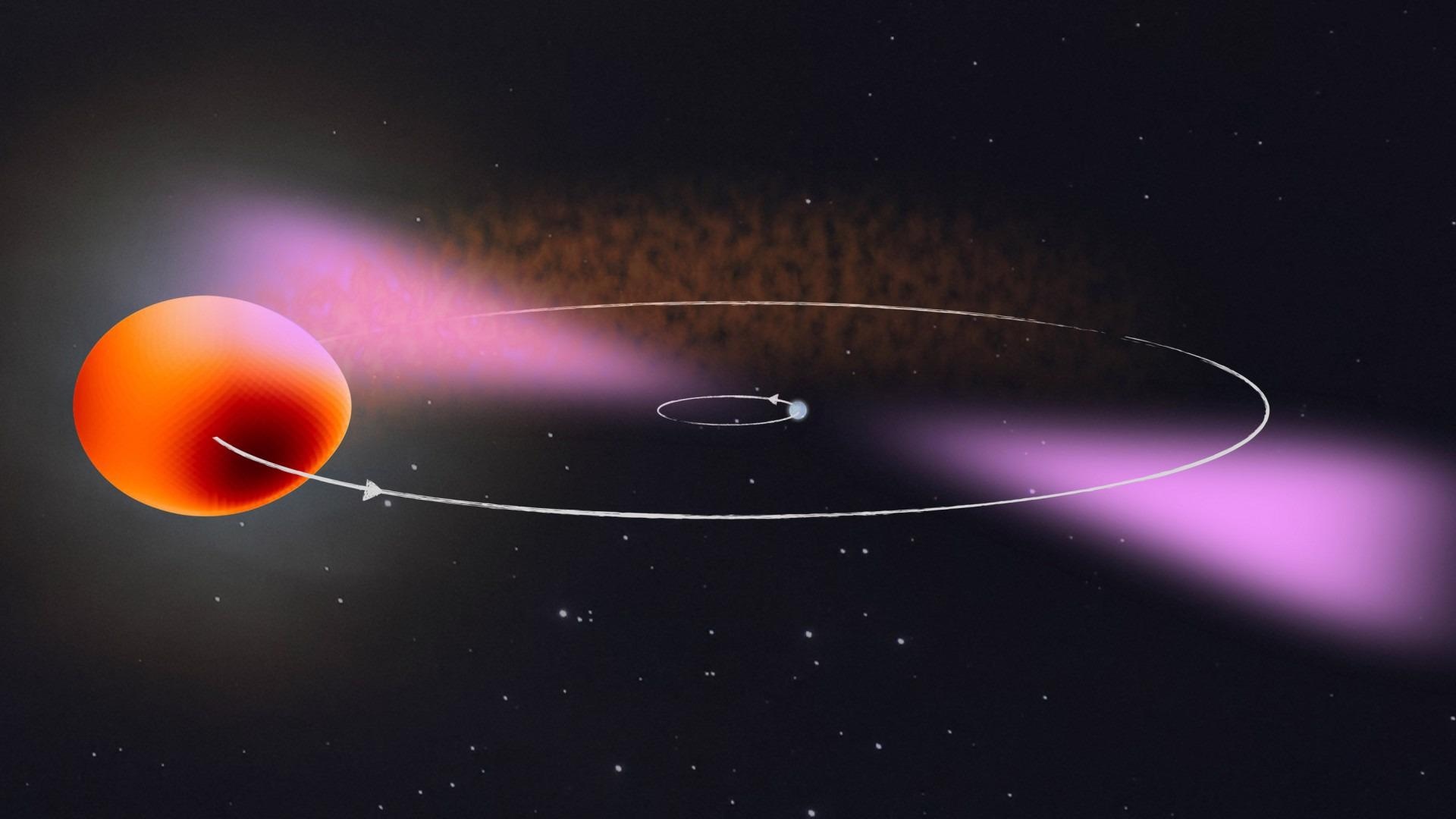Feb 4 2021
An international team of researchers, including members from The University of Manchester, has demonstrated that a quickly rotating neutron star is at the center of a celestial object now called PSR J2039−5617.

Image Credit: The University of Manchester.
The team used innovative data analysis techniques and the huge computing power of the citizen science project Einstein@Home to detect the neutron star’s faint gamma-ray pulsations in data obtained from NASA’s Fermi Space Telescope.
The study findings reveal that the pulsar has been orbiting with a stellar companion with a mass of about one-sixth of that of the Sun.
The pulsar is evaporating the star gradually but certainly. The researchers also discovered that the orbit of the companion changes slightly and unpredictably with time. With their search method, the team expects to identify more similar systems with Einstein@Home in the days to come.
A decade of accurate data was required to look for what is called the 'Spider' pulsar systems—quickly spinning neutron stars with high-energy outflows that destroy their binary companion star. Arachnid names like 'Redbacks' or 'Black widows'—species of spider in which the females kill the smaller males after mating—have been given to the pulsars.
A new study published in Monthly Notices of the Royal Astronomical Society describes how scientists discovered a neutron star that rotates 377 times per second in a peculiar binary system, with the help of data from NASA’s Fermi Space Telescope.
The study results were exclusively promoted by the Einstein@Home project, which is a network of thousands of civilian volunteers who lend their home computing power to the attempts of the Fermi Telescope’s work.
The search by the team necessitated combing effectively through the data to avoid missing any probable signals. Huge computing power is required. The search would have required 50 decades to complete using a single computer core. It was achieved in 2 months using a part of the Einstein@Home resources.
The researchers used the computing power donated by the Einstein@Home volunteers to spot the gamma-ray pulsations from the quickly rotating neutron star. The gamma-ray pulsar is now called J2039−5617 and rotates about 377 times per second.
It had been suspected for years that there is a pulsar, a rapidly rotating neutron star, at the heart of the source we now know as PSR J2039−5617. But it was only possible to lift the veil and discover the gamma-ray pulsations with the computing power donated by tens of thousands of volunteers to Einstein@Home.
Lars Nieder, PhD Student, Max Planck Institute for Gravitational Physics (Albert Einstein Institute)
Since 2014, the celestial object has been known as a source of gamma rays, X-rays, and light. All evidence achieved so far indicate a quickly rotating neutron star in orbit with a light-weight star located at the core of the source. However, there was no clear evidence.
The initial step in finding a solution to this puzzle was new observations of the stellar companion using optical telescopes. They offered accurate insights about the binary system in the absence of which a gamma-ray pulsar search (even using Einstein@Home’s enormous computing power) would not be viable.
The brightness of the system changes during an orbital period based on the side of the neutron star’s companion that faces the Earth. “For J2039-5617, there are two main processes at work,” explained Dr Colin Clark from Jodrell Bank Centre for Astrophysics, who is also the lead author of the study.
The pulsar heats up one side of the light-weight companion, which appears brighter and more bluish. Additionally, the companion is distorted by the pulsar’s gravitational pull causing the apparent size of the star to vary over the orbit. These observations allowed the team to get the most precise measurement possible of the binary star’s 5.5-hour orbital period, as well as other properties of the system.
Dr Colin Clark, Study Lead Author, Jodrell Bank Centre for Astrophysics
Using this information and the accurate sky position from Gaia data, the researchers leveraged the combined computing power of the distributed volunteer computing project Einstein@Home for a new search of about a decade of archival observations of NASA’s Fermi Gamma-ray Space Telescope.
They improved on previous methods they had created for this purpose and sought the assistance of tens of thousands of volunteers to search Fermi data for periodic pulsations in the gamma-ray photons recorded by the Large Area Telescope equipped on the space telescope. The volunteers contributed idle compute cycles on the CPUs and GPUs of their computers to Einstein@Home.
The new insights about the frequency of the gamma-ray pulsations also enabled collaborators to find radio pulsations in archival data from the Parkes radio telescope.
The findings, also reported in Monthly Notices of the Royal Astronomical Society, demonstrate that the radio emission of the pulsar is usually eclipsed by material that is blown off the companion star by its adjacent Redback pulsar.
Journal Reference:
Clark, C. J., et al. (2021) Einstein@Home discovery of the gamma-ray millisecond pulsar PSR J2039–5617 confirms its predicted redback nature. Monthly Notices of the Royal Astronomical Society. doi.org/10.1093/mnras/staa3484.